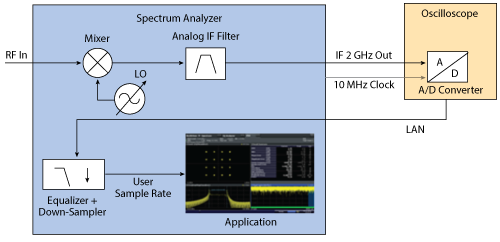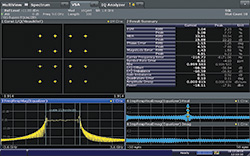The boom in mobile Internet access due to smartphones and tablet PCs has made LTE and LTE-Advanced the fastest growing mobile technologies. Because of the requirements of smartphones and tablet PCs, LTE and LTE-Advanced have been optimized for high data throughput to wireless users. However, when it comes to the requirements for 2020, it is foreseen that many new scenarios and applications need to be supported. These requirements and possible solutions are a topic of 5G research. Traditionally, the official definition of next-generation mobile communications systems comes from the ITU. Today, the future 5G requirements are being studied.
The Internet of Things (IoT) is a concept whereby more and more devices such as emergency systems, robots and home automation equipment will increase the number of connected devices many times over. The requirements of these devices will differ vastly from those of smartphones or PCs. Some will require extremely high data rates, while others will send or receive minimum amounts of data and require the simplest possible radio access procedure and many years of battery lifetime. The “tactile” Internet aims to support steering and control via the Internet. Examples range from mobile gaming and remote control of robots to healthcare applications. For consistent user perception, round trip times in the order of 1 ms are required.
Today’s cellular technology cannot meet these requirements. We therefore anticipate that 5G will require much wider frequency bandwidth, which is only available in the millimeter wave domain. Bandwidths up to 2 GHz are being discussed. New waveforms and new modulation schemes are also being demanded. While mobile network operators and network vendors have experience in frequencies from 700 MHz to 3 GHz for cellular networks, millimeter wave technology and signal propagation is a new field.
Exploiting the required frequency bandwidths will require mining these new frequency bands. One area of 5G study is exploring radio wave propagation characteristics at higher carrier frequencies, also referred to as channel sounding. Universities in the U.S. have conducted early research on the propagation characteristics of a 28 GHz signal in an urban environment. Recent investigative work by several research initiatives all over the world now includes using the 60 GHz ISM bands and frequencies around 73 GHz. A network operator in South Korea has announced that it will run a 5G network at the 2018 Winter Olympics in Pyeongchang in the 28 GHz range.
The LTE air interface does not efficiently meet all 5G requirements. The 10 ms frame duration is too long for round trip times to meet the requirements of tactile applications. The cyclic prefix is considered overhead and causes latency. Therefore, other means are needed to avoid intersymbol interference (ISI) and intercarrier interference (ICI). A filtered multicarrier approach is being studied in order to achieve synchronous and asynchronous traffic types, with loss of orthogonality in some cases. Different techniques are being investigated, such as filter bank multicarrier (FBMC), universal filtered multicarrier (UFMC) and generalized frequency division multiplexing (GFDM).

Figure 1 R&S FSW signal and spectrum analyzer with R&S RTO oscilloscope.
ULTRA-WIDEBAND SIGNAL ANALYSIS
Mobile devices require physical layer conformance tests in line with their specific standards. The required transmission test parameters and procedures with LTE, for example, are defined in the standards 3GPP 36.141 (for base stations) and 3GPP 36.521 (for mobile devices). These parameters and procedures include spectral measurements at frequencies up to 12.75 GHz and signal demodulation with up to 20 MHz analysis bandwidth. Signal and spectrum analyzers are used for these tests. However, because of the required frequency range and analysis bandwidth, the foreseen requirements for 5G testing cannot be met in the same straightforward way as with LTE.
In order to digitally demodulate signals, spectrum analyzers are the instrument of choice. Spectrum analyzers with demodulation bandwidth up to about 500 MHz are commercially available today. Combining the advantages of high-end spectrum analyzers for spectral measurements with those of cost-efficient midrange oscilloscopes is a concept in signal analysis that extends the analysis bandwidth to up to 2 GHz. The analyzer downconverts to an intermediate frequency (IF). The IF of the spectrum analyzer must be high enough to support the required frequency bandwidth. In addition, it must still be low enough for the oscilloscope to fulfill the Nyquist sampling theorem.

Figure 2 Simplified block diagram of signal and spectrum analyzer with oscilloscope for wideband signal analysis.

Figure 3 Demodulation of a signal with a 1.8 GHz symbol rate.
Such a combination is shown in Figure 1, with the block diagram of the combination in Figure 2. The signal and spectrum analyzer features an IF of 2 GHz. The oscilloscope digitizes the signal and transfers it back to the analyzer over a local area network (LAN). The analyzer equalizes and resamples the signal and mixes it into the digital baseband. The measurement software options on the signal and spectrum analyzer receive equalized I/Q data at a user-defined sample rate. This concept allows the analysis of signals up to the maximum frequency of the signal and spectrum analyzer, e.g., 67 GHz for the instrument shown.
The setup of a signal and spectrum analyzer with an oscilloscope as external analog-to-digital converter is straightforward. The analyzer firmware fully controls the oscilloscope. The user operates the measurement characteristics in the same way as with classical internal analog-to-digital converters.
Figure 3 shows the demodulation of a signal with a symbol rate of 1.8 GHz at a center frequency of 9 GHz. With the equalizer function of the measurement application, an error vector magnitude (EVM) value of 2 percent is measured. The measurement application for vector signal analysis now offers many functions for in-depth digital signal analysis. The result summary table displays EVM, phase error, magnitude error, carrier frequency error, symbol rate error and constellation distortion values. The display of the equalizer function helps to detect effects of a non-equalized frequency response or filter mismatches of the device under test.
While 5G is not yet defined, many research projects and early initiatives call for high modulation bandwidth at frequencies greater than 20 GHz. Signal and spectrum analyzers with up to 2 GHz demodulation bandwidth up to 85 GHz are commercially available today for straightforward measurements of spectrum and modulation parameters.

